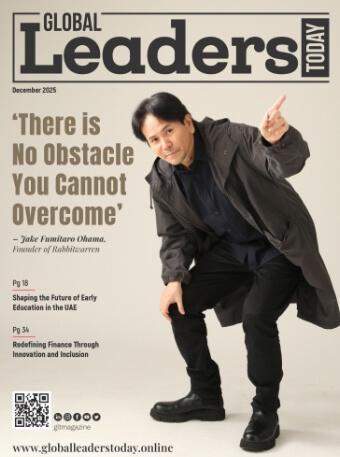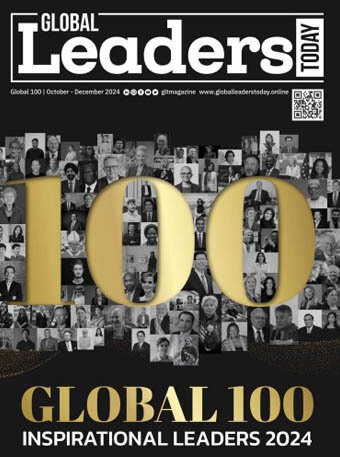- When Caring Becomes a Cage: How Over-Identification with Work Steals Your Self
- Redefining Finance Through Innovation and Inclusion
- ‘AI Prone To Errors, Use Alongside Other Tools’: Sundar Pichai
- ‘There is No Obstacle You Cannot Overcome’
- Pioneering Financial Innovation: Ali Alrawi and the Rise of Alfuras Group
Thought Leadership
Written by contributing writer, Bethany Ainsley
Imposter syndrome is extremely common, even among successful, famous and talented people. Studies have found that imposter syndrome will affect 70% of all people at one time or another.
On your journey as a leader, you’ll regularly be required to step out of your comfort zone. On the one hand, this is fantastic as you’re given the opportunity to continually grow. On the other hand, it’s the ideal conditions for imposter syndrome to strike. It can happen to any of us, at any age, regardless of our level of knowledge and expertise. It’s also known as the imposter phenomenon, fraud syndrome and imposter experience. If you’re experiencing imposter syndrome, then for no practical reason you may feel like a fraud or that your accomplishments came about as a result of luck, rather than your ability and hard work. Some of the signs and symptoms of imposter syndrome include:
- Self-doubt
- Attributing your success to external factors
- Sabotaging your own success
- Over-achieving
- Working harder than necessary
- Setting unrealistic goals
- Fear you won’t live up to expectations
- Anxiety
Imposter syndrome is regularly triggered by a new experience such as setting up a new business, winning a new contract or public speaking in front of a new audience. Cultural expectations and what you perceive as society’s definition of success can be another cause. Family expectations, comparison and perfectionism can also be a trigger. Perhaps you’re already aware that imposter syndrome is something that you have experienced.
The five core types of imposter syndrome
Dr Valerie Young has developed five core types of imposter syndrome: the perfectionist, the superhero, the expert, the natural genius and the soloist.
- The Perfectionist
The perfectionist sets goals for themselves that are excessively high, often to a point where the goal is unachievable. When the goal is not reached, the perfectionist will be hard on themselves. Rather than focusing on their achievements and strengths, the perfectionist will obsess over their flaws and the smallest mistakes. Often accused of being micromanagers, perfectionists find it hard to delegate and let go, worrying that their work will not be at a suitably high standard. If you can relate to the perfectionist, then it’s important to learn to take mistakes in your stride and remember that this is often how we learn and grow. Be mindful of the goals you are setting for yourself, stay ambitious but realistic and reward yourself for your accomplishments. Practice delegating and letting go until this becomes more comfortable and you can learn to have faith in those around you.
- The Superhero
The superhero is often the last person to leave the office and finds downtime wasteful. They sacrifice personal interests for work, but this hard work is a coverup for insecurities. This feeling of inadequacy and the need to prove themselves can affect relationships with those around them and lead to physical and mental illness and burnout. If you can relate to the superhero, then it’s important to work on your own internal validation. Start nurturing your inner confidence by believing in your ability, recognising your accomplishments and responding to challenges in a constructive way. Recognise when you have done all that you can do and then learn to switch off and recharge.
- The Expert
The expert regularly feels that they need to improve their skills to succeed. Although continuous learning is important, the expert will often take this too far, booking onto courses more often than most as a way to justify their competence. Even though they are often highly knowledgeable and skilled, they fear being found out as a fraud and may shudder at the thought of being an expert.
If you can relate to the expert, then begin by recognising your achievements and accomplishments to date. The next time you consider booking on to a new course, question if you really need it and try asking those that support you what they think, too.
- The Natural Genius
The natural genius has often excelled throughout their lives without too much effort. They judge their competence on ease and speed. They often set themselves excessively high goals, but when faced with a setback (such as not reaching these goals), their confidence is knocked. Worried they may not achieve something on the first try, they may avoid some challenges and feel uncomfortable participating in activities they don’t feel good at. If you can relate to the natural genius, then it’s important to remember that we are all a work in progress. Be kind to yourself, step out of your comfort zone and embrace new challenges. Who knows what exciting things could develop as a result…
- The Soloist
The soloist tends to feel that they must accomplish tasks on their own to prove their worth. In their eyes, asking for help is a sign of weakness or incompetence, so they prefer to work on their own and demonstrate their own achievements.
If you can relate to the soloist, then it’s important to start making a conscious effort to develop your skills in teamwork. The ability to work independently is essential, especially if you’re running a business, but recognising the strength and achievements of the wider team can enhance your working relationships and your work output, too.
Overcoming imposter syndrome
If you can relate to one or more of the five types of imposter syndrome, then I hope you find the tips associated with each one useful. Over the next few weeks and months, try and be conscious of when imposter syndrome occurs.
About the author
For over a decade, Bethany and her team have provided award-winning services that have helped thousands of people improve their health and wellbeing. Their efforts were recognised in 2015 when they were awarded The David Goldman Prize for Innovation for our work in behavior change. More recently, Bethany was presented with a Director of the Year Award from the Institute of Directors for the development of their employee wellbeing software and services, supporting businesses to achieve enhanced employee wellbeing, happiness, and productivity.
-Written by Dr. Raul V. Rodriguez, Vice President, Woxsen University The future of leadership is a topic that has garnered much attention in recent years, as organizations and societies around the...
Written by contributing writer, David Galea, Director of Digital Leadership, Centigo Yes, running fast is key to gaining a competitive advantage in business, but do not be too impatient. Learn to...
Written by contributing writer, Roni H. Amiel The clinician of the future will encounter the patient of the future: an informed, empowered member of their own care team. Clinicians working in partnership...
Revolution 2023, the groundbreaking training event with the theme “Unleash the leader within you,” marked its sixth successful year, captivating the attention of community managers from across...
As an entrepreneur, your journey can be challenging and rewarding, requiring hard work, determination, and resilience. However, it’s common to neglect your mental health in the midst of building a...
Written by contributing writer, Shiyen Shu, MSc.OT, Hon.BSc(Kin), PMP, CYT, Certified Executive Coach Healthcare has a bias for evidence-based best practices, which oddly enough is a barrier to...
The House of Change Written by Contributing Writer, Paul Seabridge Change is emotional, even when it’s for the better, and we all deal with it in different ways. In business, the most successful and...
Written by contributing writers, Anne Mieke Eggenkamp and Fennemiek Gommer, co-founders, Caracta Business Innovation Innovation requires looking at the world from different perspectives and...
Written by Contributing Writer, Rachel Turner Stress, overwhelm, and exhaustion is ubiquitous among founders. It’s no surprise, then, that recent research identifies founder burnout as one of the...

















